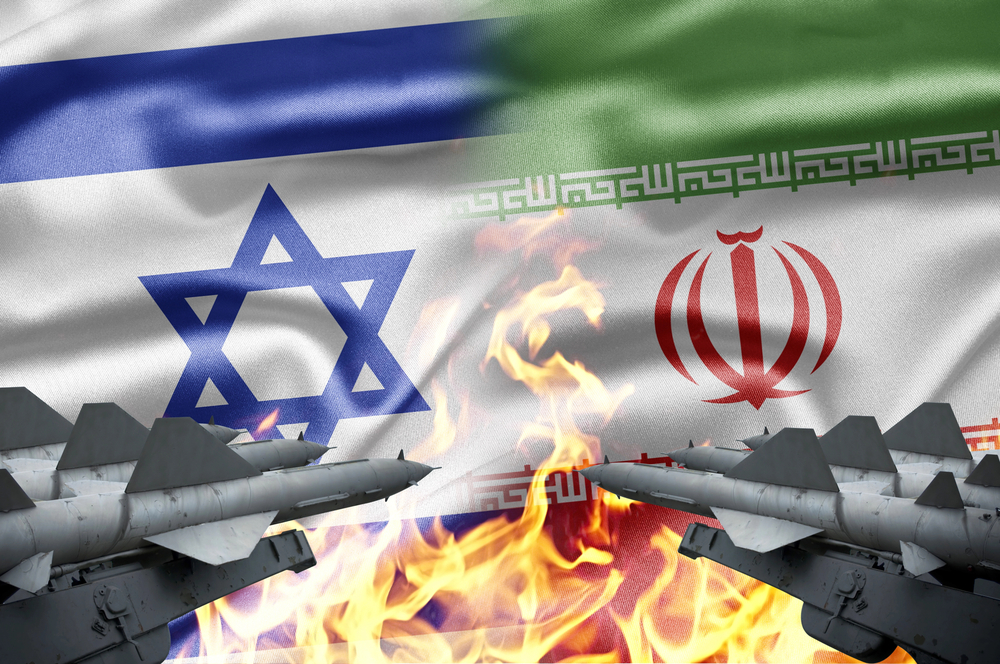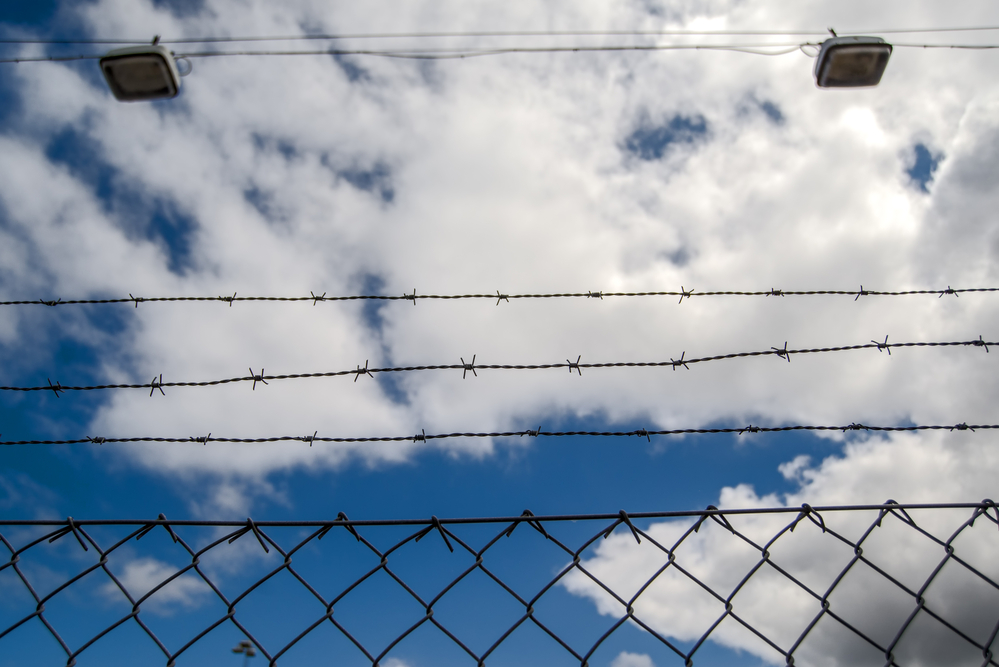This is part three of our series on the Yemen conflict. If you haven’t read earlier articles, please click HERE for Part I and HERE for Part II.
The United States Post 9-11 Involvement in Yemen
After the September 11th attacks on the world trade center, the USG’s involvement in the Republic of Yemen centered on counter terrorism (CT) operations targeting Sunni Violent Extremist Organizations. President Saleh largely cooperated with the United States in CT operations, visiting Washington numerous times to discuss strategy. In 2003, the USG renewed their support to Yemen through the United States Agency for International Development (USAID) and the United States Department of Agriculture. In addition to civil assistance, the USG beefed up its military support to Yemen, and by 2006 Yemen benefitted from nearly $10 million in annual support meant for military equipment, spare parts, and military training programs. In 2010, the Yemeni military received more than $170 million in military aid and training, but in 2011, after President Saleh authorized military action against anti-government protestors, that aid dropped to just 30 million.
Despite hundreds of millions of dollars in foreign aid and military support, Yemen remained a hotbed location for Sunni terrorists. USG CT agencies frequently complained of a lack of support from their Yemeni counterparts in locating terrorist targets inside Yemen, and diplomats noted that there very little criminal legislation to handle terrorism charges. Even with these issues, the USG found enough common ground with the Republic of Yemen (ROY) to target numerous terrorist personalities and cells, particularly in southern Yemen. The targeting method of choice was the highly contentious “drone” program authorized by President George W. Bush. President Barack Obama greatly expanded the scope of this program, which ran until 2015 when the USG closed their embassy in the capital city of Sanaa after the Houthis overthrew the ROY and seized the capital city of Sanaa.
The US drone program in Yemen was unpopular with both Sunni and Zaidi Yemenis. The extrajudicial killing of US citizen Anwar al-Awlaki brought many Americans to question the legitimacy of the program. Popular opinion among Yemenis was that the USG counter terrorism efforts robbed Yemenis of their sovereignty and the deaths of numerous civilians in erroneous strikes added to the anti-USG sentiment. Both Houthi insurgents and Sunni extremists used the USG drone program to bolster recruitment and sour Yemeni popular opinion on the United States. The Houthis used the program to argue that US involvement in Yemen robbed Yemenis of a national sovereignty, and the Sunni terrorists highlighted the civilian casualties that resulted from the drone program to drive recruitment efforts.
The Current Playing Field
In the simplest terms, there are four major international players with interest in the outcome of the conflict in Yemen: KSA and the Arab coalition, the United States, Iran, and the predominately Houthi insurgency.
KSA is a Sunni Muslim regional power, ally of the USG, and regional competitor with Iran. KSA formed a coalition with the United Arab Emirates, Bahrain, Kuwait, Qatar, Egypt, Jordan, Sudan, and Morocco. This coalition seeks to re-install the overthrown government of former President Hadi whom they believe is more willing to cooperate with GCC plans and intentions in the region.
The USG is a longstanding ally of KSA, and competitor to Iran. As an ally of KSA, the USG does not want regional competitor Iran exercising control over a puppet government or surrogate forces along KSA’s southern border. Equally important is Yemen’s strategic location overlooking the Bab al-Mandeb strait, a major maritime trade route that links the Indian Ocean to the Mediterranean Sea. The ongoing conflict also limits the USG’s ability to target international terrorist organizations such as AQAP in southern Yemen.
Iran is a Shia Muslim regional power and competitor of the USG and KSA. Iran benefits from the conflict in so much as it damages KSA’s reputation and budget. The ability to exercise a degree of control over a proxy government or surrogate forces along KSA’s southern border would be a strategic advantage. Even if the Houthis never manage to achieve governance, KSA’s struggle with a prolonged COIN operation would be a victory for Iran. If the Houthis control Aden, which overlooks the Bab al-Mandeb strait, then the Iranian would be able to exercise some influence over two of the world’s most critical maritime trade routes, the Strait of Hormuz and the Bab al-Mandeb strait.
Houthi insurgents are primarily aligned against KSA’s influence in Yemeni politics and economic affairs, making them natural allies with Iran. In terms of US decision making, the insurgency is by far the most important of the four major players. Houthi rebels represent the biggest military threat the KSA coalition, but they are not the only insurgent component among the Yemeni population and there are significant numbers of progressive Sunni working to restore president Saleh or a likeminded executive power to the state. If KSA successfully installs Hadi in Sanaa, these insurgent groups will not be likely cease operations against a KSA friendly government. Adding the insurgencies resolve and almost certainly boosting recruitment is the humanitarian crisis in Yemen caused by the KSA blockade of the country. Many Yemenis are unable to access clean water, food, and medical supplies and starvation is a real concern for millions of Yeminis. Popular perception intuitively places the blame for the results of this blockade on KSA and its allies, including the USG. It appears that KSA and their coalition allies have also killed a significant number of civilians and bombed clinics and hospitals. These relatively indiscriminate operations will certainly have an enormous impact over KSA’s ability to influence the population in its favor. Ultimately, KSA and the USG are attempting to counter Iranian influence in Yemen but if there are insurgent groups in Yemen, Iran will possess significant surrogate capability in the country. There can exist no strategy that does not focus primarily on managing or addressing the discontent of these groups.
A Houthi government in Sanaa is no more likely to result in short-term or even mid-term stability between the various insurgent factions than a KSA friendly government. Along with infighting between Shia backed insurgent groups vying for power in the central government, there exists a high probability that both internal and external Sunni factions loyal to KSA will constantly challenge the territories and government offices held by Houthis and Shia backed political and military entities. A principle illustration of this is the saga of the Iraqi state. In 2003, the USG overthrew Sadaam Hussein’s government, leading Iranian proxies and sympathizers to gain control of much of the central government and military. This Sunni disenfranchisement led to massive instability as Sunni fighters flocked to Iraq to support the Sunni insurgency against the Shia central government and the US military. The deadly insurgency fought from 2004 until late 2010 and became a focal effort of the US military. At the height of the conflict, the US military utilized more than 170,000 soldiers to quell the violence. Using the momentum of the Sunni insurgency against the Assad government in Syria, the Sunni Islamic State of Iraq and the Levant (ISIL) returned to Iraq in 2014 to challenge the authority of the Shia controlled state in Ninawa and Anbar provinces. There are some limiting factors built into the geography of Yemen, but on some scale, it is likely that Yemen’s conflict will mirror the Iraqi conflict if the Houthis retain power in Sanaa.
What are the USG’s Interests in the Conflict?
It is impossible to determine USG interests in Yemen without first understanding what national interests are, and why the USG has an interest in an alliance with Saudi Arabia. When discussing national interests, it is important to note that interests are pursued solely to preserve the power and influence of state that pursues them. The US alliance with KSA is the perfect illustration of this notion and stretches back more than 70 years, when the oil industry first made contract with the Saudis and discovered that KSA had the largest oil reserves in the world. Franklin Roosevelt met with the Saudi king Bin Saud in 1945, making the relationship between the two countries official. The USG’s relationship with KSA, the largest oil exporter in world, affords both countries a powerful level of control over the world’s energy economy. To protect this influence, the USG provides KSA with state-of-the-art military hardware, such as jets, tanks, and attack helicopters and wields the naval power of the US 5th fleet to secure KSA’s shipments of oil exports. In 1991, Saudi hosted 10,000 US troops within its borders in support of the US military intervention in the Iraqi invasion of Kuwait, which aided the US military in establishing no fly zones over Kuwait and southern Iraq. These US operations in KSA were one of the stated reasons that Osama Bin Laden cited for his attack on the World Trade Center towers on September 11th, 2001. US troops largely withdrew from KSA in 2003, but in 2010, the USG brokered the largest arm deal in world history, selling KSA more than $60 billion in modern military equipment in order to increase US/Saudi “interoperability” for contingency operations in the region. Despite such a large economic and political partnership, the US and Saudi governments have considerable differences on such issues as human rights, Israeli/Palestinian conflicts, material support to known terrorist organizations, and the intriguing connection between members of the Saudi government and the 9/11 hijackers as outlined in the now declassified “28 pages” of the 9/11 commission report. None of these issues, however, trumps the USG’s desire to cooperate with KSA to influence the world’s energy market.
The ability to control supply, and therefore to some extent the price of petroleum, is an incredibly powerful economic weapon. Countries with nationalized oil production such as Venezuela, Russia, Iran and Iraq are at the mercy of Saudi Arabia supply controls. If KSA suddenly decides to flood the market with oil reserves, the excess supply can drive prices down below the level of profitability or even production costs in some cases. This spells bad news for countries such as Russia, that budget per-barrel crude prices around $100 USD. In 2014, speculation was rampant that John Kerry and Saudi officials conspired to drive crude prices down to exert pressure on Russia and Iran, though Suhail Bin Mohammed al-Mazroui, United Arab Emirates’ petroleum minister stated “there is no conspiracy, there is no targeting of anyone. This is a market and it goes up and down.” Of course, this is anything but the truth, as the stated goal of the Organization of the Petroleum Exporting Countries (OPEC) is “to coordinate and unify the petroleum policies of its Member Countries and ensure the stabilization of oil markets in order to secure an efficient, economic and regular supply of petroleum to consumers.”
This is the opposite of operating on market signals. It is interesting to note that the sudden increase in oil supply coincided with the advent of extremely low cost shale oil operations conducted by US based companies. Had this oversupply occurred in the era before cheap shale oil production, it could have virtually destroyed US oil companies unable to sell oil at rates above oil production costs. Also of note, the price of crude oil counter-intuitively dropped to record lows at the same time the Syrian civil war and ISIL invasion of Iraq were at their peak. Instability in one of the worlds key energy production regions doesn’t typically result in rapidly declining petroleum prices. There is much evidence that the “market” was not the only mechanism at play and that some collusion between the USG and KSA likely occurred.
Even if one took the statements of the Saudis at face value and assumes that the USG and KSA did not collude to lower energy prices, the potential for such collusion is precisely the reason that the United States maintains such a strong alliance with a country that is continuously at odds with the Unites States on key issues. The elements of national power per the widely utilized D.I.M.E. model are: Diplomacy, Information, Military, and Economics. Within that construct, a relationship with KSA bolsters the economic power of the USG, and clearly explains the purpose of such an odd alliance, and why the USG would go to incredible lengths to preserve it.
The preservation of the KSA as an economic partner, and therefore combating Iranian attempts at achieving regional hegemony, is the principle reason for USG involvement in Yemen. This includes ensuring that the Bab al-Mandeb strait remains open for the movement of petroleum and other goods between the Indian Ocean and the Mediterranean Sea. While it is true that the USG valued its ability to target international terrorists in Yemen, this a distant second to keeping Iranian backed Houthi rebels from controlling Sanaa and threatening Saudi soil to the north. This is illustrated by the USG’s unwillingness to cooperate with Houthis in targeting Sunni terrorists in southern Yemen, something that Houthi rebels were quite effective in doing. To the extent that some US military officers view the Houthis as an effective counter to Al Qaeda in Yemen.
What are the Options for the USG?
One of the more difficult components of the Yemen conflict is identifying how the USG plans to pursue its interests in Yemen. Until the Houthi takeover of Sanaa, US military operations amounted to a train and advise role with Yemeni Special Operations Forces and CT operations primarily revolving around the drone program. After the fall of Sanaa to Houthi insurgents, the USG began providing support to the KSA coalition in hopes of restoring KSA’s influence through the reinstatement of a KSA friendly government. This falls in line with the larger USG strategy of countering Iranian influence in the region and keeping the eastern side of the Bab al-Mandeb strait under the control of a government more amicable than the Houthis, who at minimum have strong Iranian sympathies.
On paper, the USG’s strategy seems simple: Aid KSA in their Counter Insurgency (COIN) operation, regain control of the capital, resume CT operations, and keep the shipping lanes secure. In practice, this is an extraordinarily messy proposal, which seems to be a pattern with USG forays into the middle east. Syria and Iraq immediately come to mind. KSA’s willingness to conduct such a large scale military operation signals a departure from its 70 year strategy of using money and politics to achieve its ends while relying on the USG’s military muscle for physical defense and coercion in the region. For this reason, KSA’s military is not capable of conducting precision COIN operations which are known to be prolonged, tedious, and deadly. The demographics and geography of Yemen make a COIN operation more difficult. The Zaidi people are only a slight minority, and their center of power sits in the difficult mountainous terrain on KSA’s southern border. Further complicating matters, KSA has a history of involvement with Sunni terrorist organizations in southern Yemen and this relationship has deepened as KSA’s struggle continues in Yemen. KSA’s decision to continue their involvement with terrorists puts the other members of the coalition, including the USG, in a precarious position. It is virtually guaranteed that aiding KSA in their COIN operation will result in bolstering the capabilities and resources of some of the most dangerous terrorist groups in the world. Again, this seems to be a pattern with US military and intelligence operations in the region.
If the USG wants to ensure that the Houthis are removed from power in Sanaa, then it will most likely need to become more directly involved, as KSA has no proven ability to conduct such an operation, nor do any of its coalition partners. This is now a complicated option for the United States, as international condemnation for KSA’s bombing and blockade operations have continued grow louder with every passing day. This is a condemnation that the USG has no desire to be subjected to after 16 years of unpopular wars in Afghanistan, Iraq, and Syria. A footprint similar to the one fielded in Syria as of April 2016, would enable more precision when conducting airstrikes and aid in coordinating between the efforts of the various partner nations, but what the US would lack in Yemen that they possess in Syria is a partnership with tens of thousands of local fighters supporting the KSA Counter-Insurgency operation. Without a viable surrogate or partner force, a small-scale intervention would likely become more of a humanitarian effort to prevent more civilian casualties as the result of misguided bombs and rockets than an operational game-changer. Many thousands of ground troops would need to be fielded in Yemen in order to significantly change the outcome of the conflict to KSA’s favor. While this may seem ridiculous given the wide unpopularity of the US’ current interventions in Iraq and Syria, the possibility that the US might decide to pursue this strategy is not out of the question. If the US were to commit ground troops to Yemen, it would certainly illustrate just how highly valued the preservation of the KSA/USG alliance is to the United States.
If the US continues to provide logistical support to the KSA coalition, then it will not dodge perceived culpability for atrocities and destruction conducted by KSA. No matter how miniscule the role might be, the world will be eyeing US actions in the conflict and be fully prepared label the USG party to the atrocities. This is already a significant security issue for the US, as the perception that the USG is forever meddling in the business of other nations is a major recruiting tool for extremist groups. If the United States ceases to support KSA in their venture in Yemen, then it risks losing influence, for at least the short-term, over supply controls in the petroleum market. KSA might look to spur the US into the conflict using economic leverage to give the US a taste of its own medicine. If KSA were to admit defeat in Yemen, the USG might also have an enormous egg on its face after selling more than 60 billion in weapons and technology to the Saudis in a failed effort to make them more effective in handling their own regional affairs.
For as long as the long-term regional strategy hinges on an unbreakable alliance with KSA, it doesn’t look like the USG has any good options.
In our next and final installment we will cover how the 2016 US presidential elections could impact the conflict in Yemen, and how the US should handle the relationship with KSA and the conflict in Yemen.
Reprinted with author’s permission.











